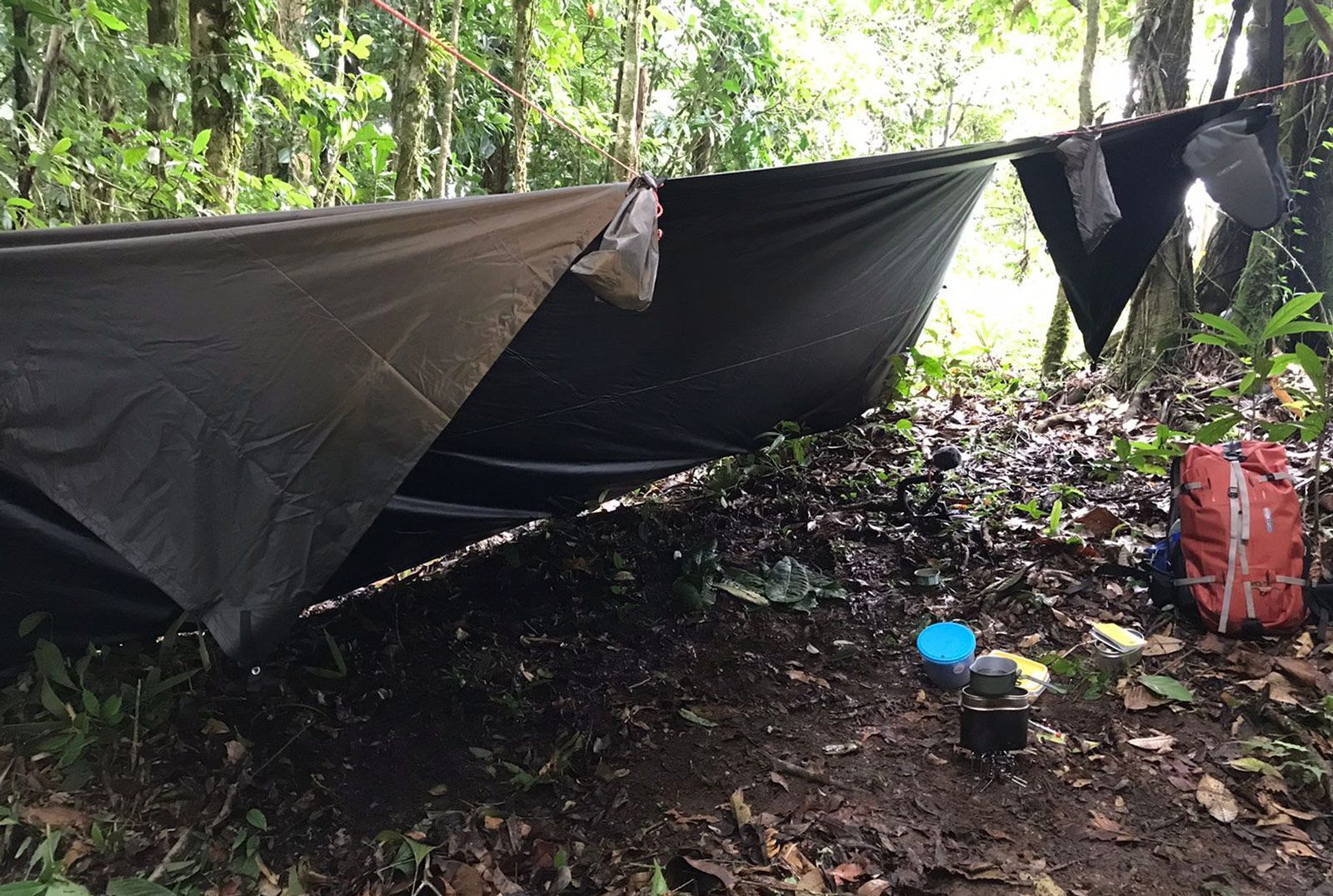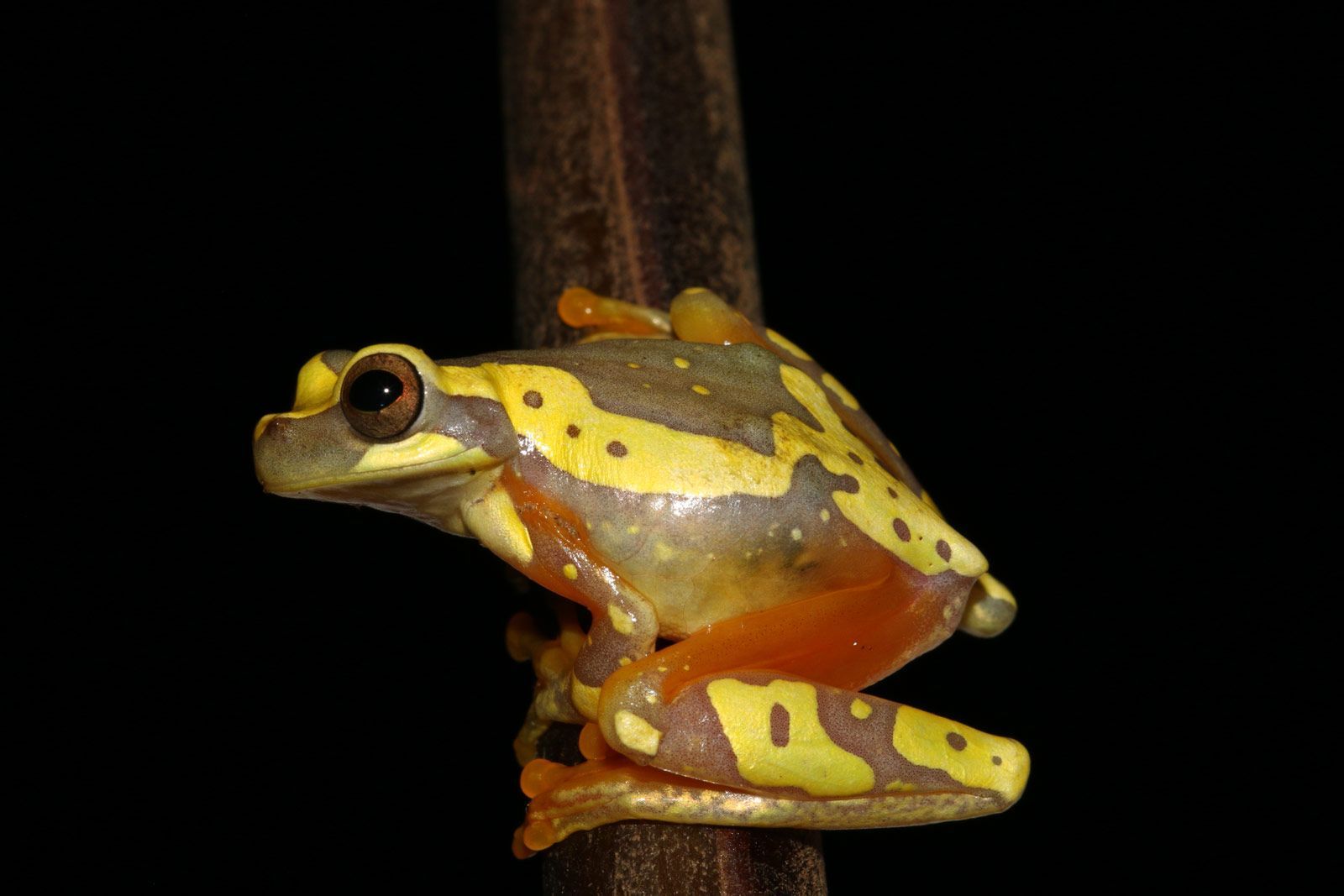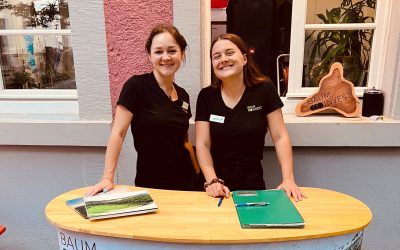
The BaumInvest Blog
Reforestation
with added value
measurable impact through
biodiversity monitoring
The rainforests of Costa Rica are among the biodiversity hotspots of the world. Here, the biodiversity is particularly high – which renders its protection and restoration all the more important! But even a country like Costa Rica, known for its environmental laws and wealth of biodiversity, is affected by increasing species extinction.
What can we do about this? The correlations are complex, but the answer is very simple: create more forests while protecting existing ones.
Through reforestation, we create new habitats in regions that are particularly rich in species, and we want to prove this – through biodiversity monitoring. We have been measuring biodiversity in our forests since 2009 in cooperation with the well-known Senckenberg Research Institute in Frankfurt am Main.
Reforestation
with added value
measurable impact through biodiversity monitoring
The rainforests of Costa Rica are among the biodiversity hotspots of the world. Here, the biodiversity is particularly high – which renders its protection and restoration all the more important! But even a country like Costa Rica, known for its environmental laws and wealth of biodiversity, is affected by increasing species extinction.
What can we do about this? The correlations are complex, but the answer is very simple: create more forests while protecting existing ones.
Through reforestation, we create new habitats in regions that are particularly rich in species, and we want to prove this – through biodiversity monitoring. We have been measuring biodiversity in our forests since 2009 in cooperation with the well-known Senckenberg Research Institute in Frankfurt am Main.
How do we carry out our biodiversity monitoring?
During his two-week stay, the Costa Rican biologist Joseph Vargas Alvarez (Senckenberg Research Institute) determined the current status of the reptile and amphibian species in our new reforestation areas and the adjacent forests.
Let us tell you – it was not an easy job. His adventurous field expedition on our two sites in Los Chiles and Guatuso took place in June.
Both sites are former grazing areas where livestock had previously been raised and their condition was accordingly – wasted and degraded.
Here, sensitive species such as reptiles and amphibians only find shelter from the sun in some remaining forest islands and small ponds. Both sites are adjacent to protected forests with great species richness, however. Los Chiles to a nature reserve and Guatuso to a national park.
Aerial view of planted area in Santa Lucia, Guatuso
Biologist Joseph Vargas Alvarez from the Senckenberg Institute
For his expedition, he divided the total area of about 1500ha into five regions; Los Chiles into two (Llano Alegre, Caño Negro) and Guatuso into three (Quebradón, El Pato, Santa Lucia). For these regions, he then systematically determined representative transects in advance. A transect is, a set route that passes through different areas such as grasslands, wetlands, or forest islands on our lands. He identified and documented each animal discovered during his transect walk – and with speed and skill, was able to snap a photo as well. Since most reptile and amphibian species are nocturnal, he was out in the Costa Rican wilderness mostly at night – alone.
After his mostly nocturnal field expeditions, he determined an index, which can be used to determine the current status of biodiversity for each region based on the animals found there. In the future, this will serve as a basis for assessing the development of biodiversity in our forests. By having a biologist conduct transect surveys every 2-3 years at the same time of year, we can prove the positive impact of our reforestation efforts on biodiversity and draw informed conclusions.
Why are reptile and amphibian species suitable indicators for us?
There are different indicators to determine biodiversity. In carrying out our monitoring, the diversity of reptiles and amphibians is measured. Due to their physiological needs, these animal species react in a particularly sensitive way to the development of pastureland into forest. Their development therefore allows conclusions to be drawn about the general state of biodiversity.
To put it simply, these animal species are meaningful indicators of the condition of an ecosystem because they live in special microhabitats, which in turn are only found in healthy forest ecosystems. In general, the healthier the ecosystem, the higher the species diversity.
The famous poison dart frog (Dendrobates pumilio), for example, is an ideal indicator for us. It was discovered by biologist Joseph Vargas Alvarez in adjacent forest areas and like many other amphibians, it requires a habitat with high humidity, which can only be found in the forests with sufficient ground cover.
It is not found in barren pastures, unprotected from the sun. If the poison dart frog is found in our reforestations in the future, it will be evidence of a healthy development of our forest ecosystem.
Poison dart frog (Dendrobates pumilio)
Near-threatened crowned tree frog (Triprion spinosus)
Taking stock: our new reforestation projects are the right piece of the puzzle to complete the biodiversity corridor
The indexes calculated by Joseph Vargas Alvarez paint a clear picture about the biodiversity of the five sampled areas. Since the animals only find shelter in very small areas on our land, the results are not very surprising: all five had a similarly low index – and thus low biodiversity. Santa Lucia had the highest biodiversity value, followed by El Pato, Quebradón and Llano Alegre. The lowest value was found in Caño Negro – where the fewest forest islands and ponds are found, but the largest area of pasture.
In all five areas, he was able to detect few reptiles and amphibians due to past habitat loss. However, a much larger number could be found in the protected forests adjacent to the properties. During his field expedition, Joseph Vargas Alvarez detected a total of 60 species in our new areas and in the adjacent forests, including 38 amphibian and 22 reptile species.
Among them is a frog species that is nearly endangered according to the World Conservation Union (IUCN). The population of the crowned tree frog (Triprion spinosus) has declined sharply in the last decade, according to the IUCN Red List.
Near-threatened crowned tree frog (Triprion spinosus)
Our forests are more than an investment
Forests not only store large amounts of carbon but are also essential to sustain life on Earth. With each tree that grows towards the sky, the canopy will slowly close, and a moist-cool forest ecosystem will emerge. We significantly expand the habitat of many (partly endangered) species by reforesting pastureland to forest and closing important biodiversity corridors. The immediate proximity to protected forest areas is a key factor in the site selection of our properties. In order to measure our reforestation projects’ positive impact on the biodiversity, we have been cooperating with the Senckenberg Research Insitute (Frankfurt, Germany) to monitor the growing biodiversity on our sites since 2009. The results from our oldest reforestation projects speak for themselves: we were able to show a significant growth in reptile and amphibian species on our sites, because many species have settled down in the reforested area again.
We are certain that our biology expert will find similar results on our newest reforestation areas as he will continue doing many more transect walks. At the end of the day, our forests are more than just an investment. Forests are always synonymous with added value. In this case, the added value is even measurable through biodiversity monitoring.
All image rights on this blog post belong to Joseph Vargas Alvarez
These articles might also interest you:
Die Hauptversammlung 2024
Mit Freude blicken wir auf ein weiteres erfolgreiches Geschäftsjahr zurück. Das Jahr 2023 brachte für die BaumInvest AG erneut ein positives Ergebnis. Am 18. Juli 2024 fand unsere Hauptversammlung, wie bereits im Vorjahr, im bewährten digitalen Format statt.
Meet & Greet 2024
Am Freitag, den 12. Juli 2024, erstrahlte unser BaumInvest Büro und Innenhof in Freiburg bei unserer zweiten Meet & Greet-Veranstaltung.
Gemeinsames Wirken vor Ort
Unsere Projekte zeigen eine gute Entwicklung und starkes Wachstum – Vorständin Antje Virkus reiste Anfang des Jahres nach Costa Rica
Don´t miss any News!
Always up to date with the periodical BaumInvest newsletter! You can subscribe here.
















